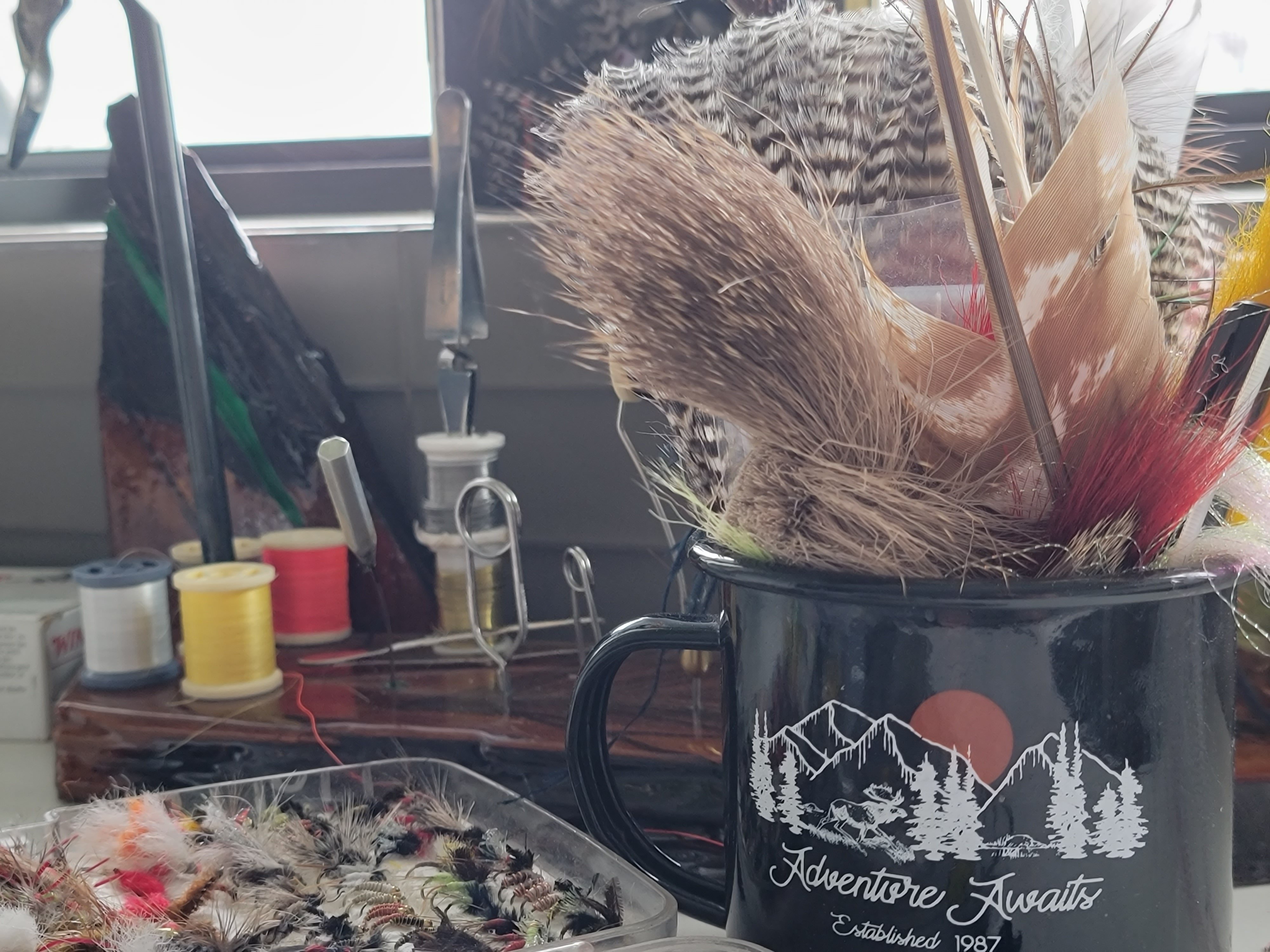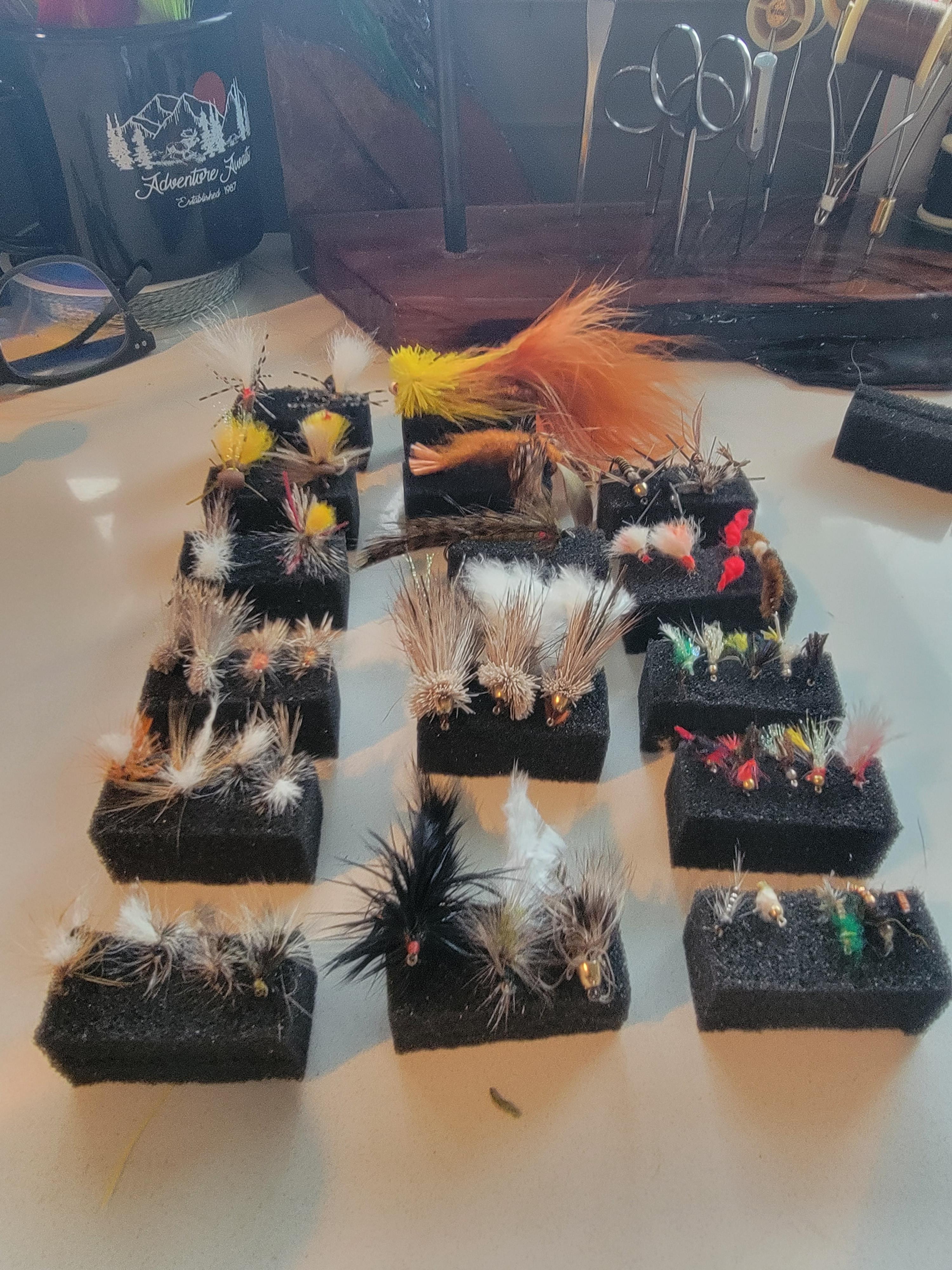Master the art of fly fishing with the Prince Nymph technique by following these expert tips.
Understanding the Prince Nymph Fly Pattern
The Prince Nymph is a highly effective fly pattern that imitates a variety of aquatic insects such as mayflies, caddisflies, and stoneflies. It is known for its distinctive appearance, featuring a peacock herl body, white goose biots for wings, and a brown hackle collar. The combination of these materials creates a realistic silhouette that attracts trout and other fish species.
To understand the Prince Nymph fly pattern, it's important to know its origin. The fly was first tied by Doug Prince, a fly fishing enthusiast from Colorado, in the 1930s. Since then, it has become a staple in fly boxes worldwide and has proven its effectiveness in both stillwater and river fishing.
The Prince Nymph can be tied in various sizes, typically ranging from size 12 to 18. Larger sizes are suitable for targeting bigger fish or fishing in faster currents, while smaller sizes work well for imitating smaller insects or fishing in calmer waters. By understanding the different variations and sizes of the Prince Nymph, you can tailor your approach based on the specific conditions and fish species you're targeting.
Selecting the Right Gear for Prince Nymph Fishing
When it comes to fishing with the Prince Nymph, selecting the right gear is crucial for achieving success. Here are some key gear considerations:
1. Fly Rod: A 9-foot fly rod with a weight rating of 4-6 is generally suitable for fishing with the Prince Nymph. This ensures you have the necessary power and control to cast the fly accurately and handle any potential fights with fish.
2. Fly Reel: Choose a fly reel with a smooth drag system and sufficient backing capacity. This will help you handle the strong runs and sudden bursts of energy that fish often exhibit when hooked on the Prince Nymph.
3. Fly Line: A weight-forward floating fly line is commonly used for fishing with the Prince Nymph. This type of line allows for easy casting and line control, essential for presenting the fly accurately and detecting subtle strikes.
4. Leader and Tippet: Use a tapered leader with a length of 9-12 feet and a tippet size that matches the fly size and fishing conditions. A longer leader provides better fly turnover and a more natural presentation.
By selecting the right gear, you can enhance your overall fishing experience and increase your chances of hooking into fish with the Prince Nymph.
Mastering the Presentation of the Prince Nymph
A crucial aspect of fly fishing with the Prince Nymph is mastering its presentation. Here are some tips to help you improve your presentation technique:
1. Dead Drift: The Prince Nymph is often fished using the dead drift technique, which involves allowing the fly to flow naturally with the current. This imitates the behavior of a drifting insect and entices fish to strike. Ensure your fly drifts without any drag or unnatural movement by mending the line and adjusting your casting angle.
2. Adding Movement: In certain situations, adding subtle movement to the Prince Nymph can trigger more strikes. You can achieve this by using a slow retrieve or by imparting slight twitches to the fly during the drift. Experiment with different retrieve speeds and twitches to find what works best in your fishing location.
3. Reach Casts: When fishing in faster currents or across seams, reach casts can help you achieve a longer drag-free drift. After your cast, reach your rod upstream or downstream to introduce slack into the line and extend the drift. This can be particularly effective when targeting fish holding in feeding lanes or behind obstructions.
Remember, the key to mastering the presentation of the Prince Nymph is practice and observation. Pay attention to the behavior of fish and adjust your presentation accordingly to increase your chances of success.
Tips for Fishing with the Prince Nymph in Different Conditions
Fishing with the Prince Nymph can be successful in a variety of conditions. Here are some tips to help you adapt your technique based on different scenarios:
1. Stillwater Fishing: When fishing in stillwater, such as lakes or ponds, focus on areas with vegetation, drop-offs, or structure where fish are likely to hold. Use a slow retrieve or intermittent twitches to imitate the movement of an insect in the water. Vary your retrieve speed and depth until you find what triggers the most strikes.
2. River Fishing: In rivers, target riffles, pockets, and seams where fish congregate to feed. Adjust the weight of your fly or add split shot to get the fly down to the desired depth. Pay attention to the speed and depth of the current to determine the appropriate weight and presentation.
3. Different Water Levels: When water levels are high or murky, consider using larger-sized Prince Nymphs with added weight to ensure they are visible and reach the fish at the desired depth. In low and clear water conditions, switch to smaller-sized nymphs and focus on a more delicate presentation.
By adapting your technique to different conditions, you can maximize your chances of fooling fish with the Prince Nymph and enjoying a successful day on the water.
Fine-tuning Your Prince Nymph Technique for Success
To consistently achieve success with the Prince Nymph, it's important to fine-tune your technique. Here are some additional tips to help you refine your approach:
1. Observe Insect Activity: Pay attention to the insect activity on the water and try to match the size and color of the Prince Nymph to the prevalent insects. Observing the behavior of fish and their feeding patterns can provide valuable insights into what the fish are actively feeding on.
2. Use Strike Indicators: When fishing with the Prince Nymph, using a strike indicator can greatly improve your strike detection. Attach a small, buoyant indicator to your leader, positioned at a distance that allows for a natural drift. Keep a close eye on the indicator, and any sudden movements or unnatural behavior may indicate a fish striking the fly.
3. Experiment with Depth and Weight: Fish often hold at different depths depending on the conditions and their feeding preferences. Adjust the depth at which you fish the Prince Nymph by adding or removing weight from your leader. This allows you to present the fly at the desired depth and increase your chances of enticing fish.
Remember, fine-tuning your technique takes time and patience. Don't be afraid to experiment and adapt to the specific conditions and fish behavior. With practice, you'll become more proficient in fishing with the Prince Nymph and increase your chances of landing fish.
.png?width=300&height=100&name=Copy%20of%20Rise%20Beyond%20Logo%2012.31.24%20(300%20x%20100%20px).png)
.png)

.png)

